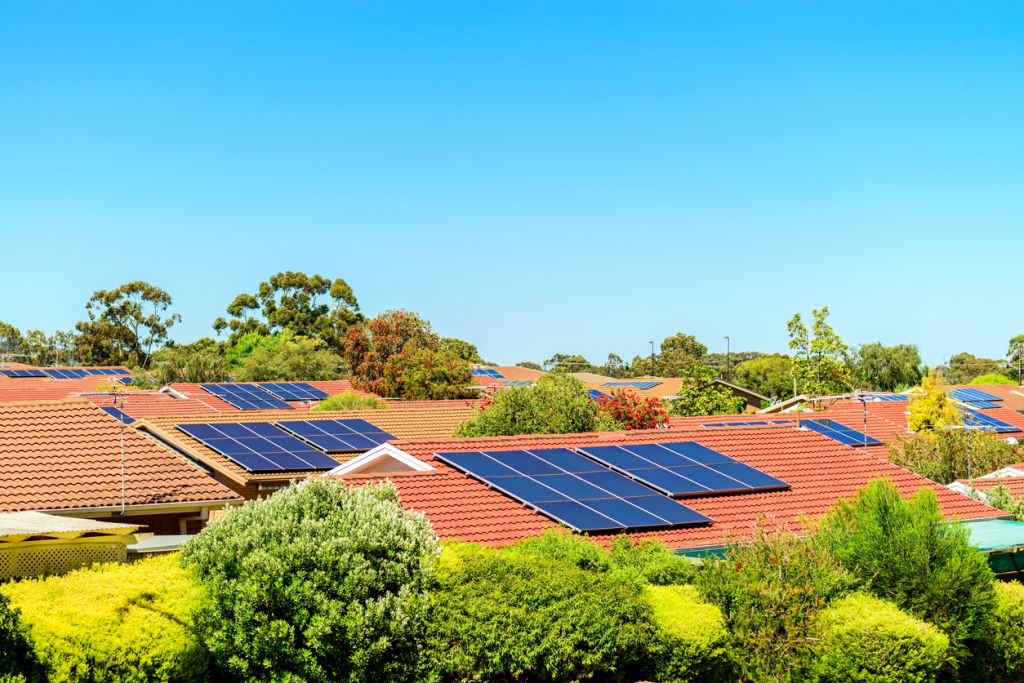How a high energy-efficiency rating for your home could add to its value

In 2006, Richard Keech’s Essendon home in Victoria was consuming about as much power as any other in his area. After years of retrofits since 2012, energy consumption has fallen by 75 per cent, and the home generates enough power to cover the remaining 25 per cent. An analysis by Keech in 2018 estimates he’s avoided more than $48,850 in energy bills.
Keech, an energy efficiency consultant and author of The Energy-Freedom Home, says ditching gas and installing electric appliances in conjunction with solar, was key.
Making your home more energy efficient
Look at your home as a whole to determine areas that could be improved to make it more energy-efficient. Keech breaks it down into these key areas:
- lighting
- draft proofing
- insulation and windows
- appliances and cooking
- heating and cooling
- hot water
- energy monitoring and control, and
- solar power
First, Keech suggest improving the thermal envelope of the house. That’s everything that connects to the outside: the walls, ceiling, floors and windows. “The overall performance is dominated by the worst-performing bits, so it’s really important to ensure there are no gaps in insulation,” he says.
And window performance is more important than most realise. “Going from single to double glazing takes windows from being thermally terrible to just being merely bad,” he says. “So, don’t forget to include good window coverings and external shade, and keep the window size moderate.”
When it comes to solar installation, think holistically alongside basic improvements and retrofitting, he says. “Most existing homes can reasonably expect to achieve this. It’s a journey. It involves many steps and may take a number of years. But the results will be transformational.”


The growing popularity of energy-efficient homes
Andrew Bloom, a real estate agent at Sanders Property Agents, says energy efficiency is increasingly important to home buyers. Common questions he’s asked concern water tanks and the orientation of rooflines, but, “the biggest is solar,” he says. “It does come up at least every second house: if it doesn’t have solar, could it?”
While location and other key factors still dominate buyers’ priorities, energy-efficient features can help sway buyers considering competing homes, he says. “The home is saving you money in a compounding way. That builds confidence in it.” There’s also the feel-good factor of reducing your carbon footprint. “We’re all concerned about climate change and what sort of life we’re going to leave our kids,” he says.
The “invisible value” of many power-saving features means these need to be promoted actively to potential buyers. “It’s easy to see the pool or the pizza oven,” Bloom says. “What they don’t necessarily click with instantly is that there’s a heat pump; there’s an extra water tank underneath the driveway taking care of your irrigation; there’s treatment on the windows.”
One way to promote these features is to show the buyer the energy bill, Bloom suggests. “These are little things we can start to do. No one doesn’t want to have an energy-efficient home. And, it’s going to get more and more important.”
Another way to showcase your home’s energy-efficiency status is to obtain a star-rating certificate.
The energy efficiency star rating system for homes
Just as fridges and other appliances can benefit from a high energy star rating, so too can your home.
Energy rating is one system the government uses to satisfy the National Construction Code’s energy performance regulations around new home builds, Keech says. It can also be applied to existing buildings.
Assessors use the Nationwide House Energy Rating Scheme (NatHERS) rating tools to give your home a star rating between 0 and 10. Homes with a higher star rating are considered more thermally comfortable and cheaper to run.
In the ACT – the only Australian state in which energy ratings must be mandatorily disclosed as part of the house sale process – higher energy-efficient homes fetch a higher premium. A study using sale and lease transactions in the ACT, found a seven-star NatHERs rating equated to a price increase of 9.4 per cent over a similar three-star rated home.
How to get your home rated
You’ll need to engage and pay an accredited NatHERS assessor (individual assessors set their own fees). They’ll input data about your home (including layout and orientation, construction and materials, insulation, window size and glazing) and climate, into a NatHERS accredited software tool to determine how well your home performs thermally. However, it doesn’t evaluate in-house features like hot water systems, appliances and lighting.
For existing homes, Keech recommends the Residential Efficiency Scorecard.
“It takes into account that thermal envelope as well as heating and cooling systems, window coverings, solar, things like that,” he says. “It’s a more holistic picture of how good your house is likely to perform for occupants.”
We recommend
States
Capital Cities
Capital Cities - Rentals
Popular Areas
Allhomes
More










